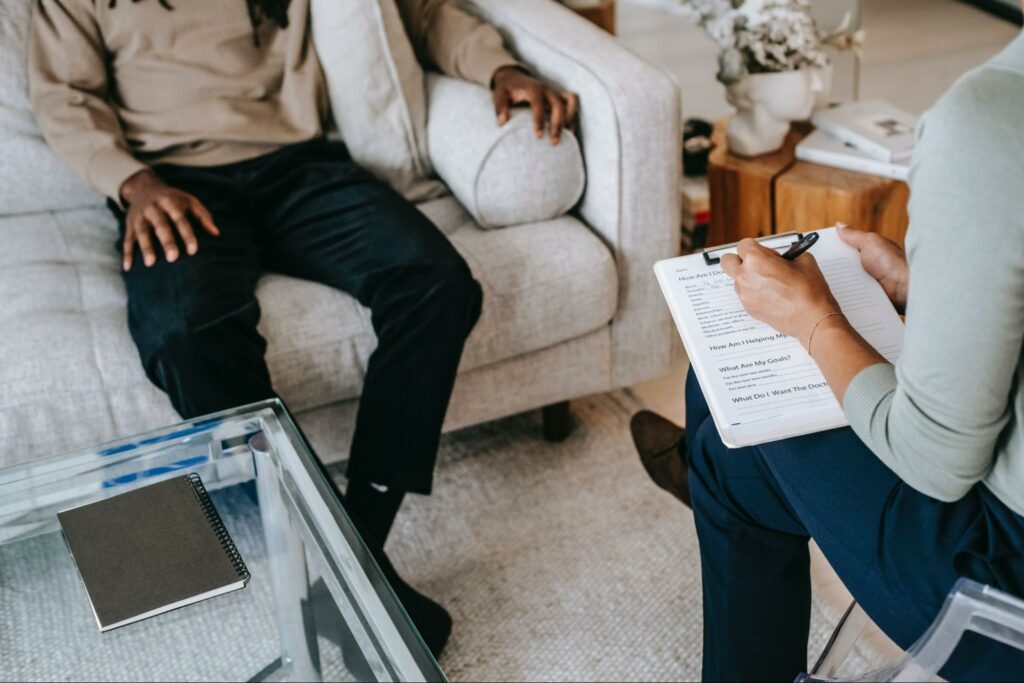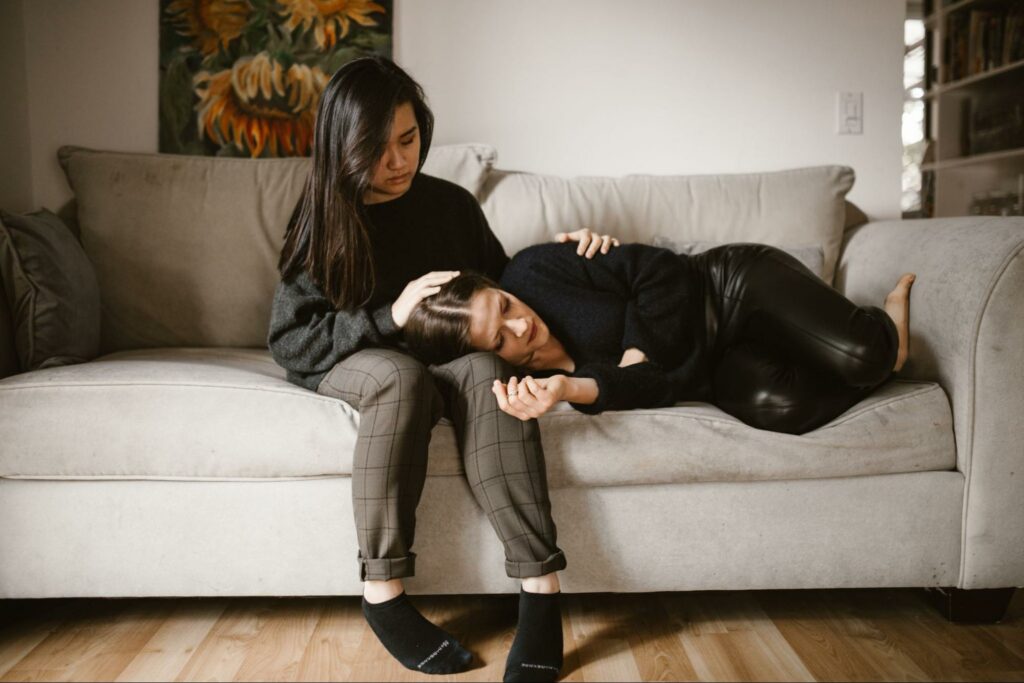Article At Glance:
- Connection rebuilds trust and supports trauma recovery.
- Safety and empowerment restore control of PTSD, depression, and anxiety.
- Movement and physical activity can improve mental health by promoting relaxation and reducing stress.

Ways To Heal Emotional Trauma
(1) Connection and community are essential for trauma recovery
Earlier we discussed that trauma is a response to a stressful event that disrupts our sense of self and shatters our sense of security. These events cause a disconnect between ourselves and our community. The goal of trauma therapy is to rebuild those connections, once safety has been established.
As Dr. Judith Herman, M.D. has stated in her book Trauma and Recovery, “recovery can take place only within the context of relationships; it cannot occur in isolation. In [their] renewed connection with other people, the survivor re-creates the psychological facilities that were damaged or deformed by the traumatic experience. These faculties include the basic operations of trust, autonomy, initiative, competence, identity, and intimacy.”
Rebuilding connections can occur in individual therapy, couples therapy, and group therapy. Further, rebuilding these connections can also take place outside of therapy. For example, reconnecting with old friends, volunteering, taking a class that interests you. Forming connection and community does not have to focus on the trauma and the event.

(2) Safety and empowerment treat PTSD, depression, and anxiety
In order to build a safe environment, we should first consider establishing parameters that foster a sense of autonomy and safety. These parameters are called boundaries. Boundaries provide us with a safe context within ourselves and with current and future relationships.
Boundaries are balanced emotional and physical limits that are clearly defined so that our sense of personal identity, uniqueness, and autonomy are not lost. In other words, we do not want to become overly enmeshed/dependent and/or too detached/overly independent. Ultimately, we are free to be ourselves with no restrictions placed by others as to how to think, feel or act. Boundaries also provide us with a sense of predictability and known order. There is great comfort in predictability and known order after trauma.
Additional Read: Anxiety In Teens: Powerful Strategies To Help Your Teen Beat Anxiety

(3) Movement: Get Your Body Moving For Better Mental Health
Trauma responses disrupt our equilibrium. Often we will get stuck in fight-flight-freeze-fawn. When we are stuck in our hyperarousal state, our bodies are flooded with adrenaline and cortisol. These hormones are beneficial when we are in a life threatening situation (e.g., think bear chasing you in the woods) because these hormones prepare our body to get to safety.
However, when we are not actively in danger and we are stuck in a trauma response, we are putting severe mileage on our bodies. Our bodies are continuing to produce adrenaline and cortisol, but we have nowhere to direct that energy. Increased levels of adrenaline and cortisol put us at increased risks for heart disease, depression, anxiety, fluctuations in weight, problems with memory, and digestive problems.

Experts recommend that we move our bodies for at least 30 minutes a day. You can do that all at once or break that down into three 10-minute intervals. The kind of movement is important. It is suggested to engage in movements that are rhythmic, using both arms and legs. For example: walking, running, swimming, and dancing. These rhythmic bilateral movements are important for assisting the brain in rewiring the communication between the emotional mind and the cognitive mind. This rewiring ultimately allows the prefrontal cortex to “get back online.” It is also recommended to engage in movement that requires some level of mindfulness.
For example yoga, weight training, and martial arts (my favorite that has helped me with my own trauma recovery, Muay Thai). Mindfulness-based movements, like rhythmic bilateral movements, serve a couple of specific purposes.
- First, if we are not mindful and in the moment, we might get injured.
- Secondly, mindful movements require us to be in the moment and completely present. This serves as a distraction from intrusive thoughts and sensations that are not related to the task at hand.

(4) Regulate Your Nervous System
There is power in being able to identify what we are feeling and then taking action to change that feeling to regulate our arousal. Before we can regulate our arousal, we must first identify what we are feeling. I suggest checking out my colleague Christina’s blog about how to differentiate feelings and emotions. In her blog, Christina states “feelings can be differentiated as literal sensations that are felt in the body. Whereas emotions are specific labels that we give a familiar sensation or combination of sensations which we have learned to mean a particular emotion.”
Once we have identified the feeling, we can take action to regulate our nervous system. Here are some ways to regulate our nervous system:
- Mindful breathing
- Sensory Input
- Watch a sunrise/sunset
- Pay attention to the sounds of nature (waves, leaves rustling, rainfall)
- Listen to soothing or invigorating music
- Burn incense or light a scented candle
- Use your favorite lotion
- Smell some eucalyptus or lavender
- Suck on a piece of peppermint or sour candy
- Take a hot bath or shower
- Pet your cat or dog
- Wrap yourself in a blanket
- Hug someone
- Put clean sheets on your bed
- Grounded
- Feel your feelings as they arise



